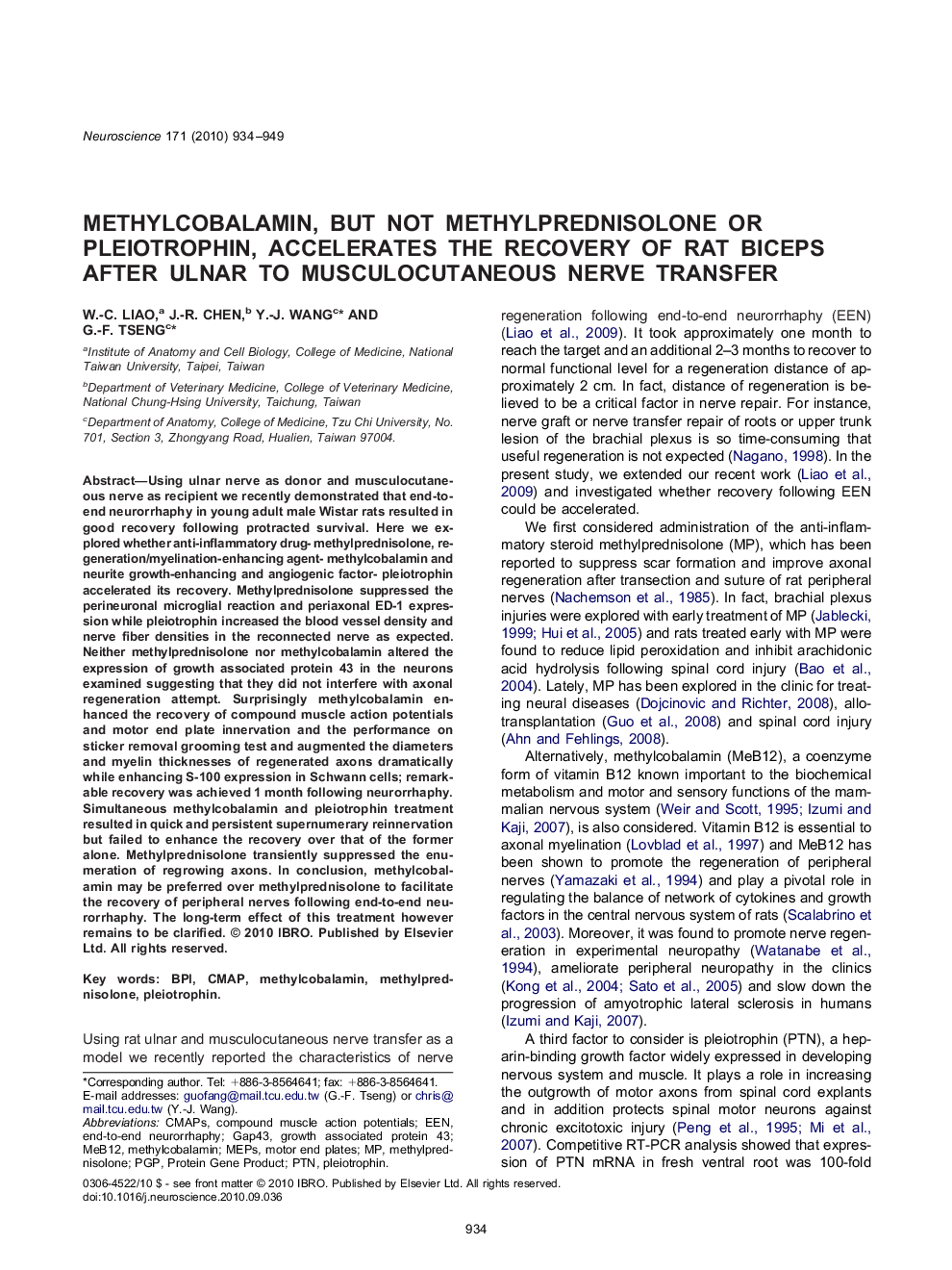| Article ID | Journal | Published Year | Pages | File Type |
|---|---|---|---|---|
| 4339261 | Neuroscience | 2010 | 16 Pages |
Abstract
Using ulnar nerve as donor and musculocutaneous nerve as recipient we recently demonstrated that end-to-end neurorrhaphy in young adult male Wistar rats resulted in good recovery following protracted survival. Here we explored whether anti-inflammatory drug- methylprednisolone, regeneration/myelination-enhancing agent- methylcobalamin and neurite growth-enhancing and angiogenic factor- pleiotrophin accelerated its recovery. Methylprednisolone suppressed the perineuronal microglial reaction and periaxonal ED-1 expression while pleiotrophin increased the blood vessel density and nerve fiber densities in the reconnected nerve as expected. Neither methylprednisolone nor methylcobalamin altered the expression of growth associated protein 43 in the neurons examined suggesting that they did not interfere with axonal regeneration attempt. Surprisingly methylcobalamin enhanced the recovery of compound muscle action potentials and motor end plate innervation and the performance on sticker removal grooming test and augmented the diameters and myelin thicknesses of regenerated axons dramatically while enhancing S-100 expression in Schwann cells; remarkable recovery was achieved 1 month following neurorrhaphy. Simultaneous methylcobalamin and pleiotrophin treatment resulted in quick and persistent supernumerary reinnervation but failed to enhance the recovery over that of the former alone. Methylprednisolone transiently suppressed the enumeration of regrowing axons. In conclusion, methylcobalamin may be preferred over methylprednisolone to facilitate the recovery of peripheral nerves following end-to-end neurorrhaphy. The long-term effect of this treatment however remains to be clarified.
Keywords
Related Topics
Life Sciences
Neuroscience
Neuroscience (General)
Authors
W.-C. Liao, J.-R. Chen, Y.-J. Wang, G.-F. Tseng,
